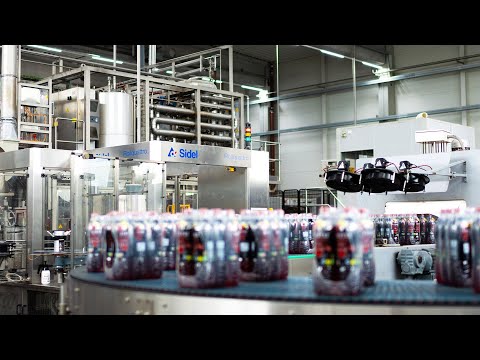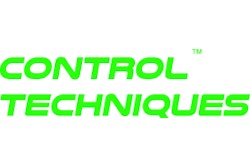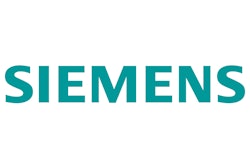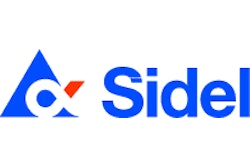The meeting was the first step in the likely formation of a working group for packaging under the umbrella of the OMAC Users Group. (Part one of this report was published last month and is available on-line at [ib]packworld.com/go/omac[n].)
At the meeting, head engineers from Anheuser-Busch, General Mills, Hershey Foods, Nabisco and Procter & Gamble assembled into a panel that made a case for motion control standardization. When asked which aspect of motion control would end-users like standardized the most, the panelists equally preferred a standard motion programming language and a standard motion networking protocol.
Since there is no dominant networking protocol for motion control, suppliers peppered the panel with questions as to which of the existing protocols seemed best as a candidate for a standard. Though all of the panelists have standardized on Ethernet for controller-to-controller communications, none of the panelists currently has a motion control networking standard, except for Hershey, which tends to specify SERCOS.
Regarding SERCOS, Richard Siegel, director, OEM business development for Motion Engineering, Inc., a PC-based motion control supplier, asked: "SERCOS has long suffered from a chicken-and-egg [situation]; it's a great technology, but [there's] not enough pieces for enough vendors to use them effectively. What does it need to be really widely adopted?"
The answer from Hershey Foods, the largest user of SERCOS on the panel, was interesting. "From my perspective, that's a marketing question and not a technical question," responded Keith Campbell, director of automation & integration for Hershey. "It does what we need, and we don't have any enhancements in mind. It's up to all of you [the supplier community] to respond from a marketing perspective."
Nabisco also spoke up: "We would not position ourselves to go to an automation vendor and say we want SERCOS," said Nabisco's Don Boyle, senior director, process control systems. "We would listen to their presentation. We would ask why haven't all the motion vendors adopted it as a primary communications protocol."
Procter & Gamble has also left the choice of the motion protocol up to its automation vendor. "We have a key [automation] vendor that we have partnered with, and that vendor hasn't used SERCOS," said Daniel Amundson, technology leader, global product supply engineering at P&G. "The critical mass hasn't been there to push us over the top. But I see that happening."
The panel was then asked if Fast Ethernet (100 megabits/sec) had been considered as an alternative to SERCOS.
"No, but FireWire has sparked my interest," responded P&G's Rob Aleksa, corporate controls section head. FireWire, an extremely fast network protocol, was originally created by Apple Computer. It is now an open standard under IEEE-1394. So far, only a few motion vendors support it.
At that point, Motion Engineering's Siegel spoke up again, claiming that it's possible to separate the physical layer from the actual protocol, making it possible to run the SERCOS protocol on top of a low-cost, high-speed PC network such as Ethernet or FireWire. "That may be where the two converge," he said.
IEC 1131 as a standard?
The panelists were then asked if their respective companies would consider either adding a motion-specific programming language specification to the existing IEC 1131-3 PLC programming standard, or creating a separate specification for an IEC programming language. (IEC 1131-3 is a non-hardware-specific, international standard for programming industrial controllers, whether a PC or PLC. The specification is made up of four programming languages that can be mixed and matched to program an industrial controller. But it lacks a motion control language and has not yet been widely embraced in the U.S.)
Hershey's Campbell was open to using IEC 1131 as a vehicle, but registered this objection: "Possibly putting it under IEC 1131 implies the PLC is still king in this environment. We're not convinced PLCs need to be involved in packaging machinery," he said, alluding to the idea that a motion controller could be programmed to handle logic as well, dispensing with the need for a separate PLC.
The idea of building on an existing standard was appealing to Anheuser-Busch. "I'm a proponent of not inventing another language if there's something in IEC 1131 that will work," said Ray Zimmerman, director, corporate engineering. "We have enough difficulty in training our workforce without adding additional [languages]."
However, with IEC 1131, points out P&G's Rob Aleksa, the standard permits different levels of compliance. "Not all controls suppliers are at the same levels, so there are discontinuities," he said. "I understand it takes time for suppliers to integrate each of those languages. [But] we would like to see that."
At that point, John Kowal, marketing manager for Indramat, said that a white paper on single-axis motion control has been published for comment by an IEC 1131 technical committee ([ib]www.plcopen.org/whatsnew.htm[n]). That white paper could be used as a starting point by an OMAC working group for packaging.
Questioning PC control
PC-based control, sometimes referred to as open control or soft PLCs, were also discussed. Many PC-based controllers can handle some motion control, and some dedicated, stand-alone motion controllers are actually PCs.
The panelists' view of PC control for motion was mixed. P&G has actually surveyed its engineers on open control versus traditional or proprietary controls, said Aleksa. P&G engineers felt that open control resulted in better functionality and lower costs for hardware, application development and maintenance. However, respondents felt training costs were about the same, and controller reliability and support were actually higher compared to proprietary controls.
Other panelists, open to the promise of open control, remained unconvinced as to the current state of the art.
"Sometimes PCs do not provide the transportability of code that they're touted to," said Hershey's Campbell. "Also, the time to repair them is unacceptable."
Nabisco's Boyle was unequivocal: "We don't believe soft PLCs match [traditional PLCs] for reliability at this time."
P&G's Aleksa said PC control is appealing since it has the potential to offer "other control techniques and strategies that you couldn't [execute] on traditional control platforms." However, such capabilities must be measured against the lifecycle cost of PC control, which tends to be higher than traditional controls to the extent that the rapid change in technology forces frequent updates to the machinery.
"I see merit [to PC control]," said Aleksa. "But we have to be careful. There are situations in which it could [be used], but at least at this point there are questions about robustness. It's hard enough to maintain the PC at home, let alone on the factory floor."
Other issues
Another topic that provoked the panel was presented by John Walewander, marketing manager for Parker Hannifin's Compumotor Div. (Rohnert Park, CA): "There are two approaches to motion control," he began. "One is a centralized approach where processing is happening in one place, while the other is where more and more processing is being pushed down to the drive. What is your preference? Centralized or decentralized control?"
Responded Anheuser-Busch's Zimmerman: "In the past our preference would be to decentralize it as much as possible due to network performance issues. But today with Fast Ethernet and fast processors, I think it's possible to go back to more of a centralized model. Maintenance with a centralized model is a lot easier on the plant maintenance force, but there's still a lot of development work [to be done.]"
P&G's take on the question was a bit different. "We would like it distributed as much as possible, but we don't want to have to spend a lot of effort to do the integration," said Daniel Amundson. "We would thus stick with a centralized approach because otherwise we'd have to spend too much time integrating."
Engineers from Nabisco and P&G did agree that if a centralized approach was taken, then processing should be pushed out of the drives, up to the motion controller on each packaging machine, but no higher. An overall motion controller for a packaging line wasn't desirable.
"If we're installing a huge packaging line, centralizing [motion control] would be a bad thing [in case] we [would] want to change an individual motor," said P&G's Dave Bauman, technology leader, corporate engineering.
OEMs silent
Noticeably absent from the Q&A were the voices of machinery builders. Commenting on that, one OEM said, "Maybe our lack of voice here sends a message: we draw from the [controls] supplier pool, trying to pick the technology that will solve the problem." He suggested that the debate should leave OEMs on the sidelines and instead be focused between controls suppliers and end-users. OEMs would then adopt whatever standard is hammered out.
However, the end-users sharply disagreed with that assessment.
"I see this as a three-legged stool with end users, OEMs and controls suppliers," said General Mills' Robert Kelley, manager, electrical control. "I don't think any two groups can pull it off without the third group. I certainly deem OEMs as critical [to the debate]."
Striking a philosophical note, Keith Spiro, packaging applications engineer for Siemens Energy & Automation (Alpharetta, GA) asked whether standardization holds back innovation.
"We have found that's not really true," said Nabisco's Boyle. "Machine standards are not absolute. We wish they were further along than they are. But you still have an option of moving away from a particular standard if someone has made substantial innovation. I think standards can help more than they hurt."
Added Hershey's Campbell: "Standards help industry innovate in one direction instead of different directions. Right now I have more innovation than I need."
Editor's Note: To join OMAC or see panelist's presentations, see
http://www.arcweb.com/omac/wgs/GMC/MtgPresent1099/presentdefault.htm.
Part one of this article is available on-line at packworld.com/go/omac.





























